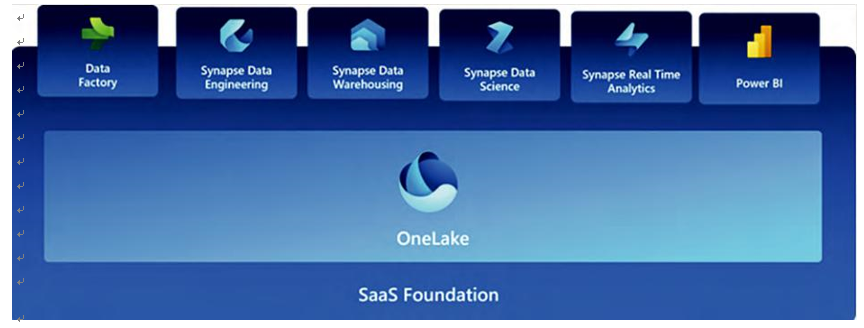Azure HDInsight
Figure 4-10 shows the logo used to represent Azure HDInsight globally.

FIGURE 4-10 Azure HDInsight logo
Venture into the world of open-source analytics with Azure HDInsight. It’s a cloud service that brings to your fingertips leading open-source frameworks such as Hadoop, Spark, Hive, and more. Imagine wanting to process log files spread across a decade to extract patterns.
HDInsight, with its scalable clusters, can process these logs efficiently and provide actionable insights.
114 CHAPTER 4 Describe an analytics workload on Azure
Azure Data Factory
Figure 4-11 shows the logo used to represent Azure Data Factory globally.

FIGURE 4-11 Azure Data Factory logo
Your data often resides in diverse locations, formats, and structures. Azure Data Factory is your go-to orchestration tool to collect and move data across various supported Azure data stores. Think of it as the bridge connecting your data sources to your analytics engines. If you have sales data in on-premises SQL databases and want to merge it with clickstream data in a blob store for warehousing, Data Factory can orchestrate that flow seamlessly.
Azure Data Factory
Figure 4-12 shows all the components of Microsoft Fabric.

FIGURE 4-12 Microsoft Fabric components
Microsoft Fabric is an integrated analytics platform that combines data warehousing, data engineering, data science, and business intelligence into a single, unified experience. It’s built on a software-as-a-service (SaaS) foundation, bringing together existing components from Power BI, Azure Synapse Analytics, and Azure Data Factory. This eliminates the need to stitch together different services from various vendors and simplifies your analytics needs.
Skill 4.1 Describe common elements of large-scale analytics CHAPTER 4 115
DATAWAREHOUSE IN MICROSOFT FABRIC
Fabric offers two distinct data warehousing experiences:
- SQL Analytics endpoint of the lakehouse: This is an automatically generated ware-house created from your lakehouse in Microsoft Fabric. It provides a familiar SQL inter-face for data analysts and business users to query and analyze data without needing to learn new tools or languages.
- Warehouse: The warehouse is a dedicated data store optimized for analytical work-loads. It offers greater flexibility and control over data management compared to the SQL analytics endpoint. You can define schemas, create tables and views, and manage partitions and indexes.

Leave a Reply